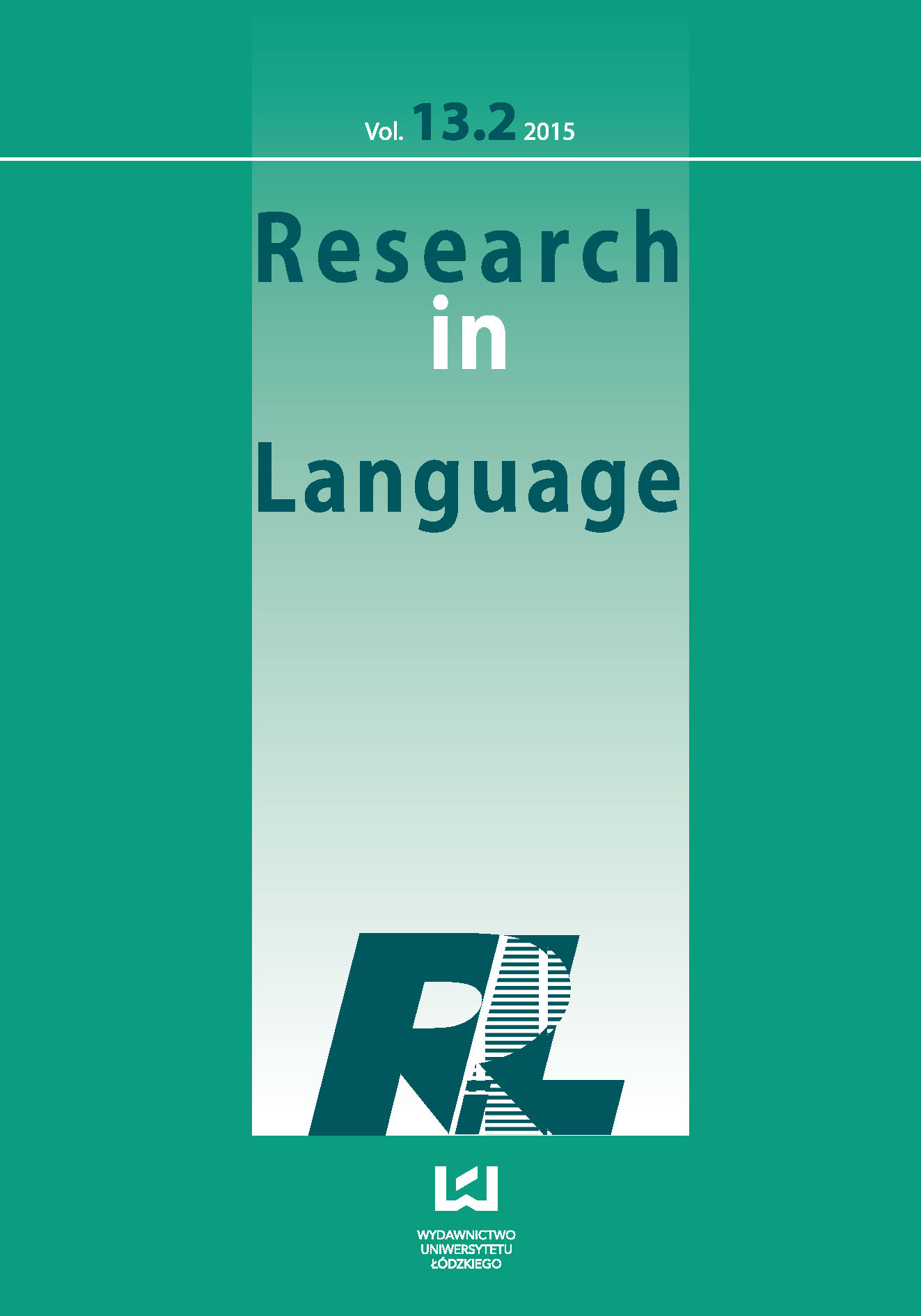Pronunciation Acquisition Patterns of Learners with Different Starting Levels
DOI:
https://doi.org/10.1515/rela-2015-0023Keywords:
SLA, English, phonetics, pronunciation, pedagogy, inter-learner variationAbstract
This study described the results of an investigation into the effect of an intensive 12-week pronunciation course in British English which 30 Dutch female 1st-year university students of English took. They read out the same text before and after the course. Each student’s ‘before’ and ‘after’ tests were recorded. Before analysis of their results, students were split up into three groups on the basis of their general starting level: high, intermediate and low. The analysis involved a before- and after comparison of the pronunciation of eleven different phonemes: /æ, ɒ, ɔː, ʌ, ʊ, d, θ/, medial /t/, coda /r/, and syllable-final /d, v/.The analysis was done by means of both auditory and acoustic analysis. Four degrees of success (or lack thereof) were defined. The results show that the consonants required the least effort, as they were already relatively acceptable before the course started. This was true of students in general, regardless of initial starting level. The three levels of students are most distinguishable on the basis of the development of the consonants during the course. The weaker students’ consonants in particular benefitted from the course.The research revealed that initial level can be used to predict the trajectory of improvement. A general conclusion is that teachers may recognise types of students before the course starts and subject them to different types of teaching.
References
Adank, P., Smits R., & R. van Hout. (2004). A comparison of vowel normalization procedures for language variation research. Journal of the Acoustical Society of America, 116(5), 3099-3107.
Google Scholar
Boersma, P., & Weenink, D. (2009). Praat: Doing Phonetics by Computer (Version 5.1.05). Retrieved May 1, 2015, from http://www.praat.org/.
Google Scholar
Collins, B., den Hollander, S.P., Mees, S.P., & Rodd, J. (2011). Sounding Better: A Practical Guide to English Pronunciation for Speakers of Dutch. Holten: Walvaboek.
Google Scholar
De France, T., & Smakman, D. (2013). The effects of teaching Dutch learners British English consonants. An experimental study. In D. Smakman & L. Willemsen (Eds.), Proceedings of the Van Schools tot Scriptie Colloquium 2012, Leiden, 8 & 9 June 2012. Leiden: Leiden University Repository.
Google Scholar
Deterding, D. (1997). The formants of monophthong vowels in Standard Southern British English pronunciation. Journal of the International Phonetic Association, 27, 47-55.
Google Scholar
Gussenhoven, C., & Broeders, A. (1997). English Pronunciation for Student Teachers. Groningen: Wolters-Noordhoff-Longman.
Google Scholar
Hoorn, M., Smakman D., & Foster, A. A. (2014). Pronunciation grading practices by teachers of English. In R. van den Doel & L. Rupp (Eds.), Pronunciation Matters. Accents of English in the Netherlands and Elsewhere. Amsterdam: VU University Press.
Google Scholar
Iseli, M., Shue, Y.L., & Alwan, A. (2007). Age, sex, and vowel dependencies of acoustic measures related to the voice source. Journal of the Acoustical Society of America, 121(4), 2283-2295.
Google Scholar
James, W., & Gardner, D. (1995). Learning styles: Implications for distance learning. New Directions for Adult and Continuing Education, 67, 19-32.
Google Scholar
Kolb, D. (1984). Experiential Learning: Experience as the Source of Learning and Development. Englewood Cliffs: Prentice-Hall.
Google Scholar
Leite, W.L., Svinicki, M., & Shi, Y. (2009). Attempted validation of the scores of the VARK: Learning styles inventory with multitrait–multimethod confirmatory factor analysis models. Educational and Psychological Measurement, 70, 323-339.
Google Scholar
Pashler, H., McDaniel, M., Rohrer, D., & Bjork, R. (2008). Learning styles: Concepts and evidence. Psychological Science in the Public Interest, 9, 105-119.
Google Scholar
Pennington, M. C. (1989). Teaching pronunciation from the top down. RELC Journal, 20(1), 21-38.
Google Scholar
Purcell, E.T., & Suter, R. W. (1980). Predictors of pronunciation accuracy: A reexamination. Language Learning, 30(2), 271-287.
Google Scholar
Rietveld, A. C. M., & van Heuven, V. J. (2001). Algemene Fonetiek [General phonetics]. Bussum: Coutinho.
Google Scholar
Smakman, D. (2006). Standard Dutch in the Netherlands. A Sociolinguistic and Phonetic Description. Utrecht: LOT.
Google Scholar
Smakman, D. (2015). Accent Building. A British English Pronunciation Course for Speakers of Dutch (2nd ed.). Leiden: Leiden University Press.
Google Scholar
Smakman, D., & De France, T. (2014). The acoustics of English vowels in the speech of Dutch learners before and after pronunciation training. In J. Caspers, Y. Chen, W. Heeren, J. Pacilly, N. O. Schiller & E. van Zanten (Eds.), Above and beyond the Segments. Experimental Linguistics and Phonetics (288-301). Amsterdam: John Benjamins.
Google Scholar
Van den Doel, R. (2006). How Friendly are the Natives? An Evaluation of Nativespeaker Judgments of Foreign-accented British and American English. Utrecht: LOT.
Google Scholar
Van der Haagen, M. (1996). Caught between Norms. The English Pronunciation of Dutch Learners. Utrecht: LOT.
Google Scholar
Waugh, E. (1936). Mr Loveday’s Little Outing and Other Sad Stories. London: Chapman & Hall.
Google Scholar










